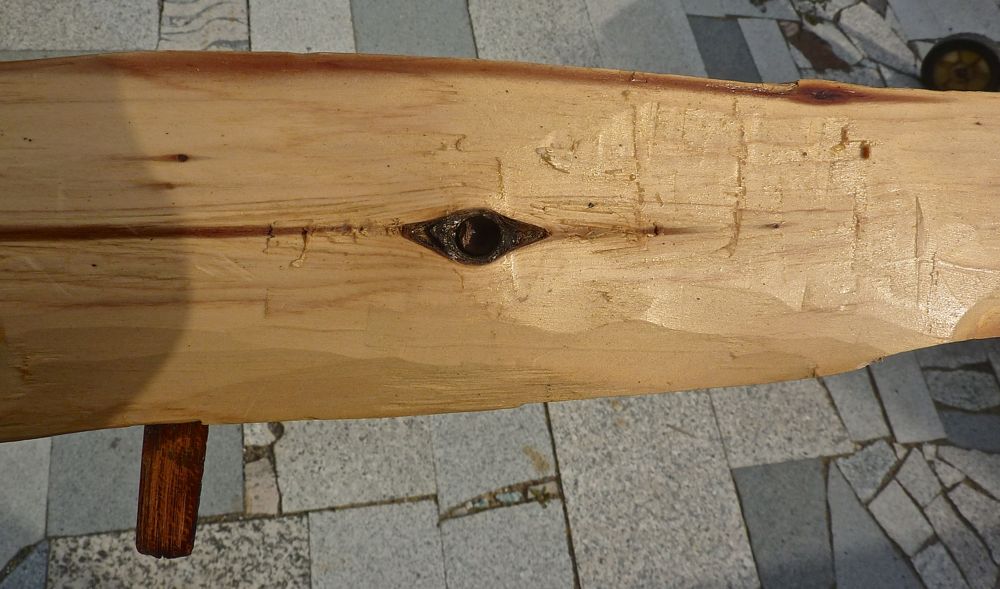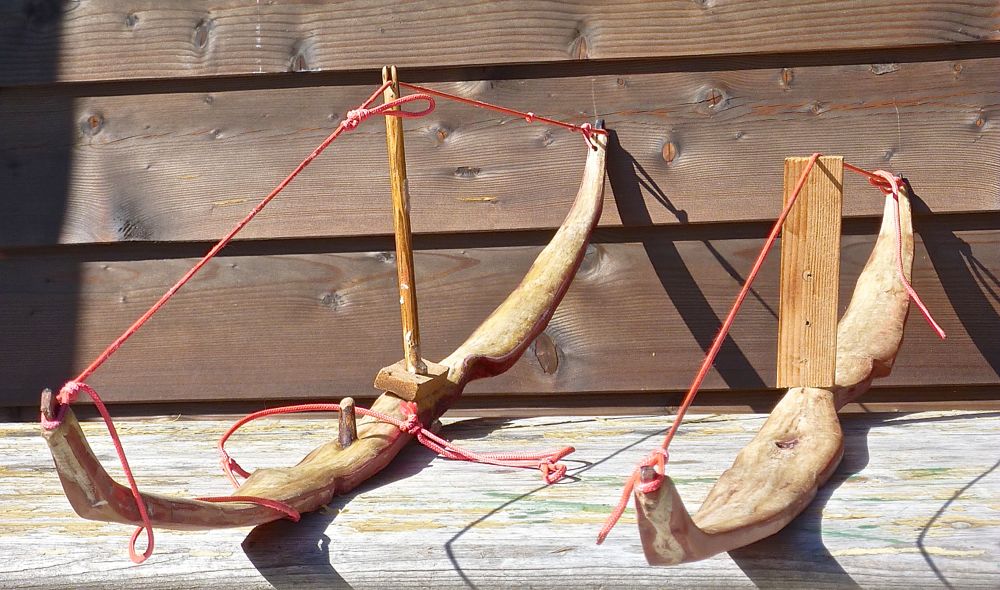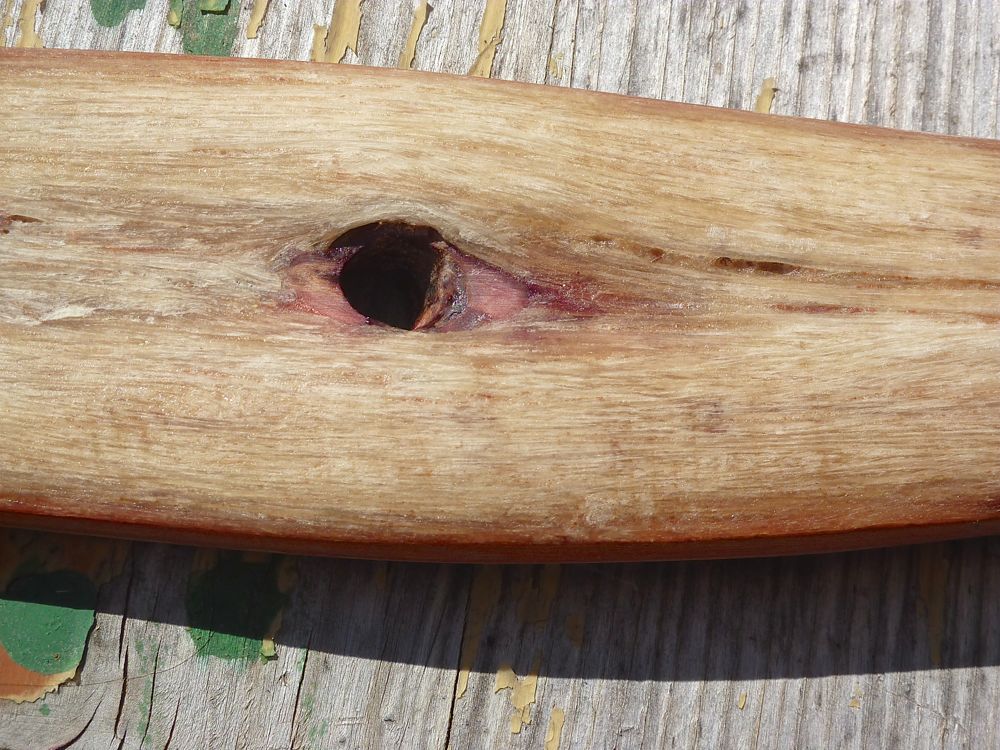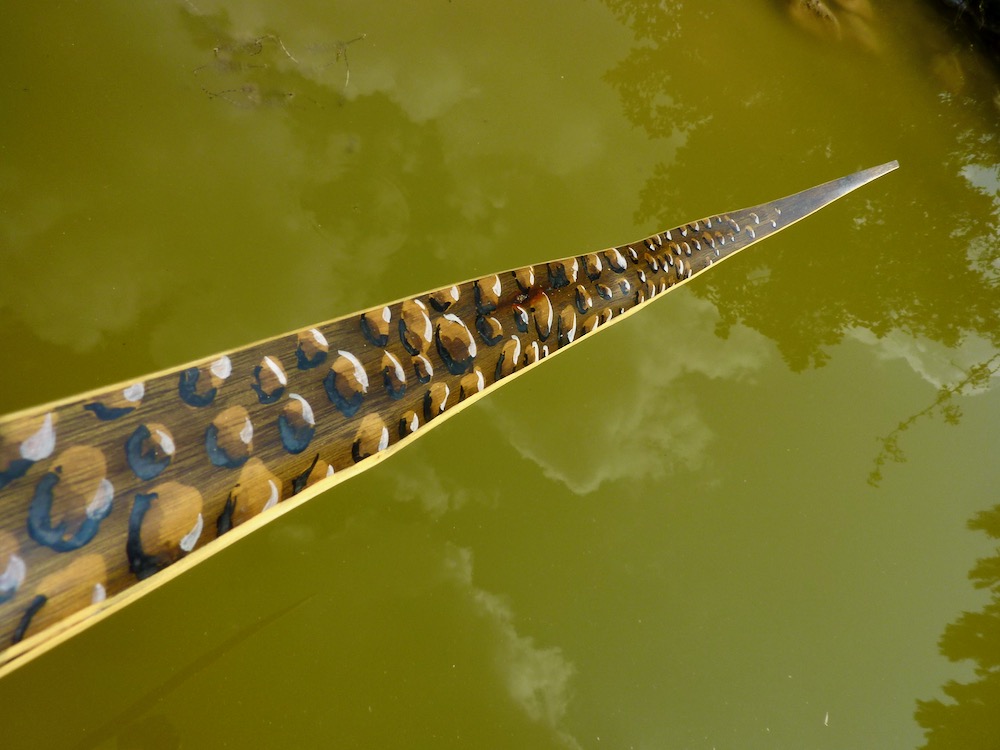Here is the stave I’ve got from my friend Erwin (thank you, Erwin!) from Austria. It is a bit deflexed, 52” long, about 2” wide at the crown, has some avoidable knots and unfortunately one absolute not avoidable.
I first thought about making a replica bow, but gave up that idea and went for a free style design.


It wasn’t wide enough to make billets out of it, so I decided to go for a short bow. A bow that short should be a bendy handle bow, which allows taking apart a belly split. First the ends got a new fresh cut to make the growth rings easier visible, next the split along the chosen ring was prepared with a chisel – the initial split is determining the splitting through. After the first opening I went with osage wedges, alternating one from the right, one from the left and so on.

ERC splits easy, so I can do second half of the job with only the draw knife, using it as a wedge.


Everything went o.k. but the problem knot didn’t want to get loose. I turned back to wedges and had a hard work, I didn’t want to violate the soft wood but that branch was tough. You can see the problem knot in the middle.

I considered turning over sawing this part, but suddenly the upper part gave up and split apart leaving the little branch in the belly split.

Here from the back

At least I had two staves, a back split with a hole and a belly split with a … mmmh – a little branch.
Let’s call the two splits mom and dad.



ERC is incredible light wood and very soft, it should have a backing. I will do a sinew backing on both. First some cleaning up, a rough ring choosing, some side cleaning to taper the width and at least reducing the thickness on some parts.

dad’s back

mom’s back

There weren’t much to play with and the staves determined more or less the layout. This cleaning up was made very roughly and did last no longer than 10 min per stave.
I like to have some short flipped tips, or short statics on bows that short. I steamed in a little bend on both staves. Here they are laying side by side, from left to right: mom, dad, two plains bows with already the first layers on and an indian hornbow which needs some more sinew on one limb. The two ERC staves were carefully prepared with acetone and three coats of thinned hide glue.


I will go for pin nocks, but this soft wood has to be strengthened with bone horn or at least rawhide/sinew. I found some horn leftovers, only 1-2mm thick – that’s enough.

Forgot to take a pic of applying the little horn plates.
Next was the sinew job, sorry no pics from the process. Sticky glue on my rubber gloves and taking pics makes some trouble.

Both are now braced backwards with a cord and an old broken arrow or a stick while seasoning.
The cord will get slack in some time, then I replace the stick with a longer one.

But here is the result; I’m very satisfied how they came out. The sinew is worked around the hole and the remaining branch.





Now I will let the backing cure a bit and then wrap the tips and the handle with sinew. I think one layer is enough for that light wood. The finished bows are in the ‘Bows’ section here!




